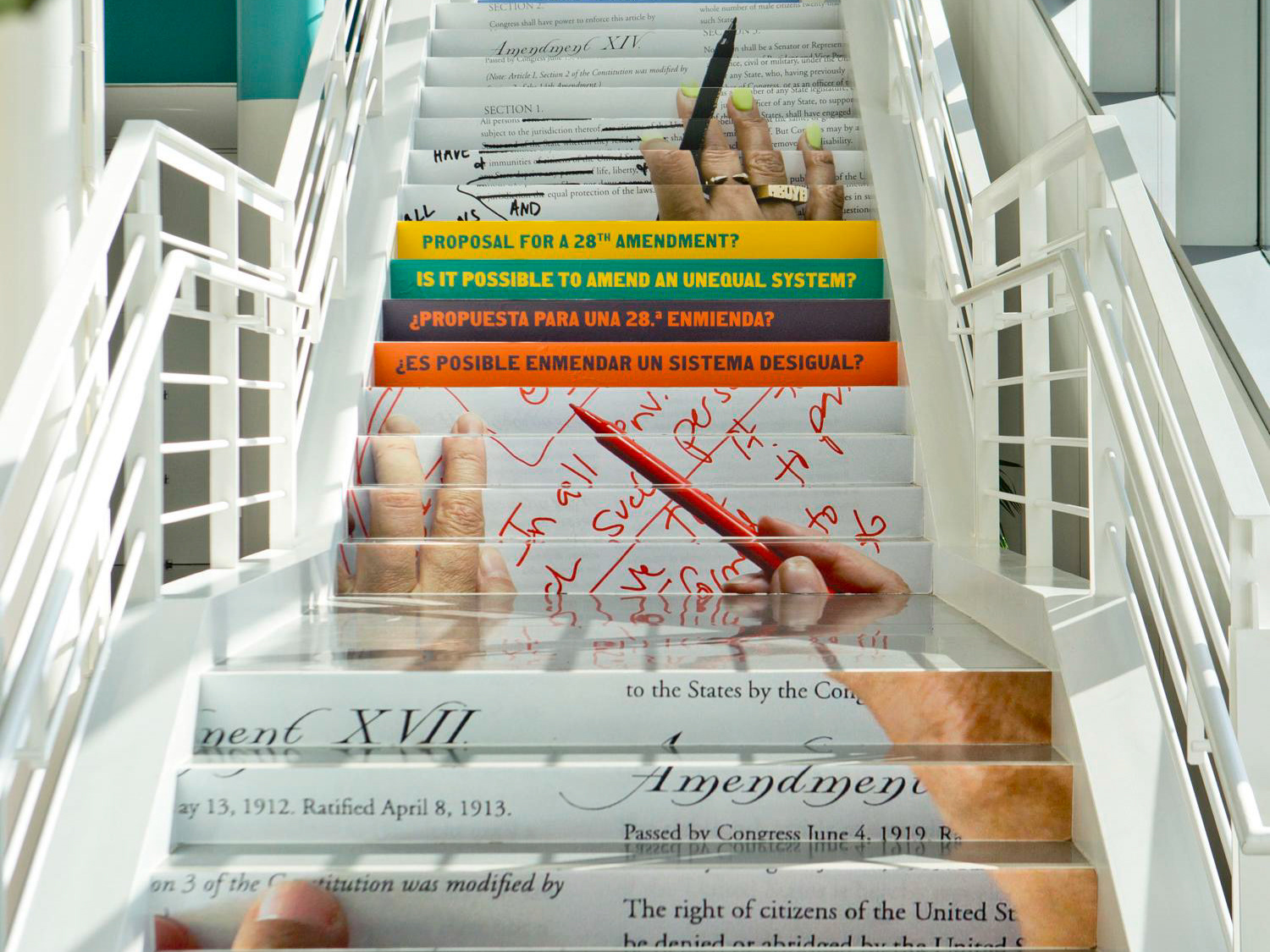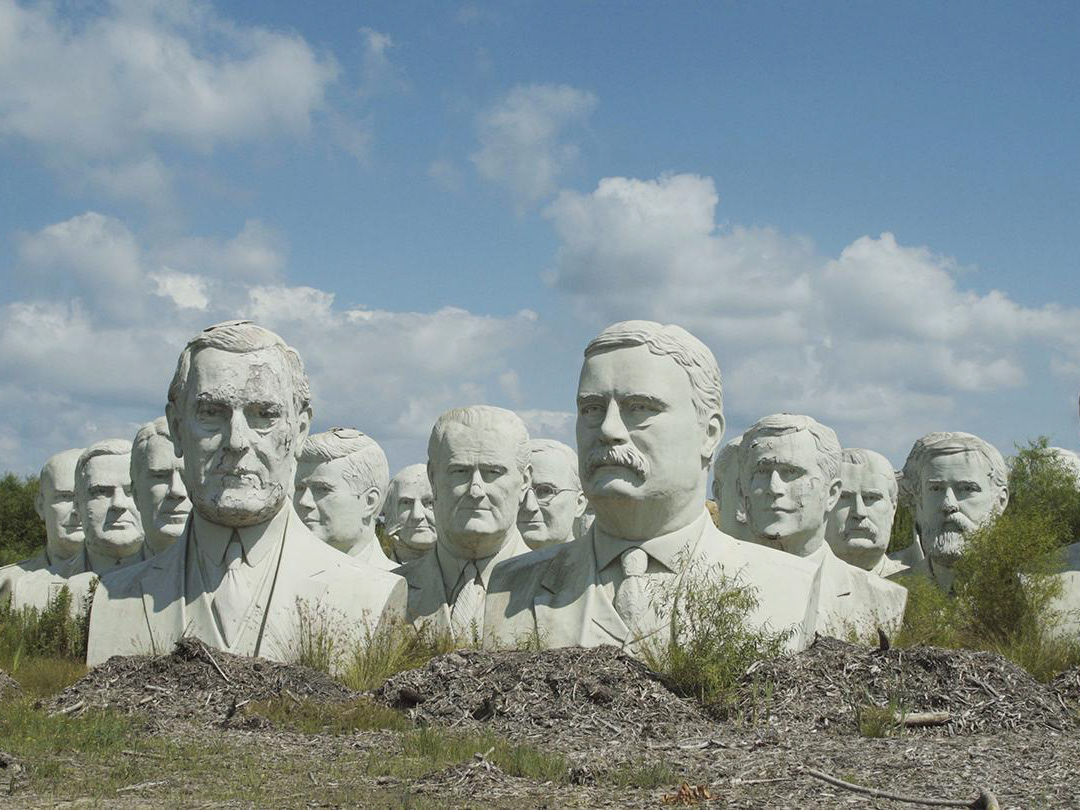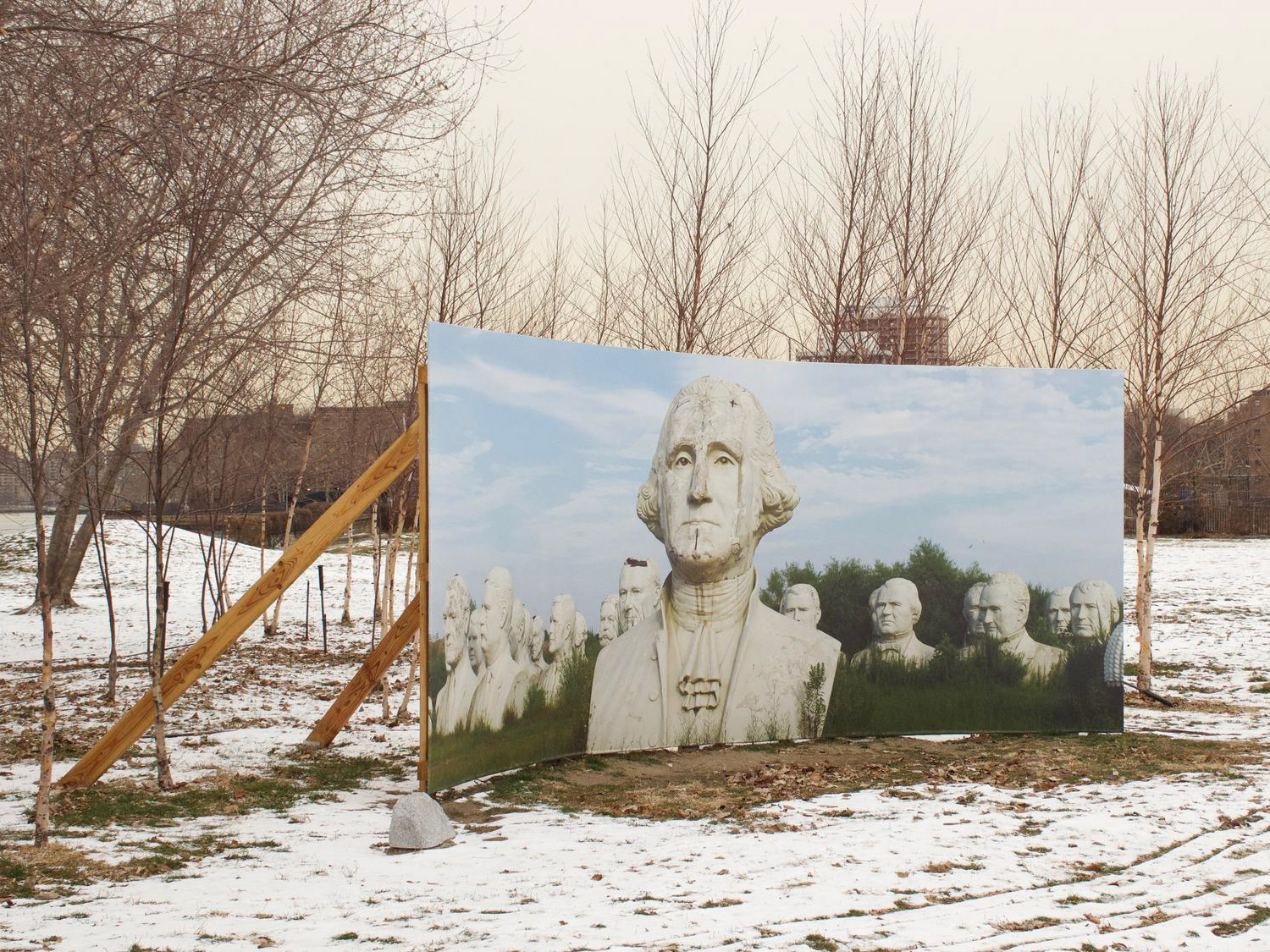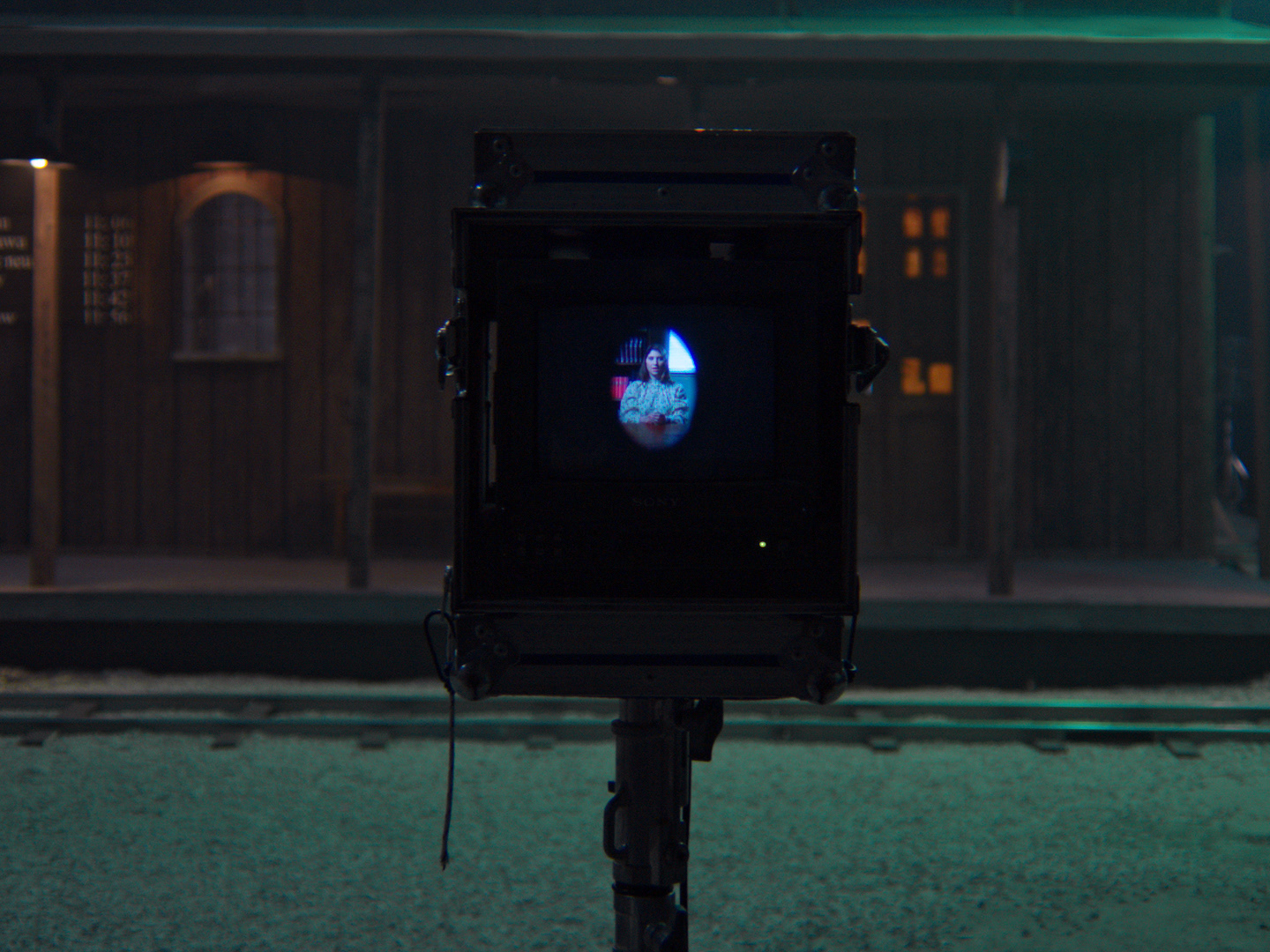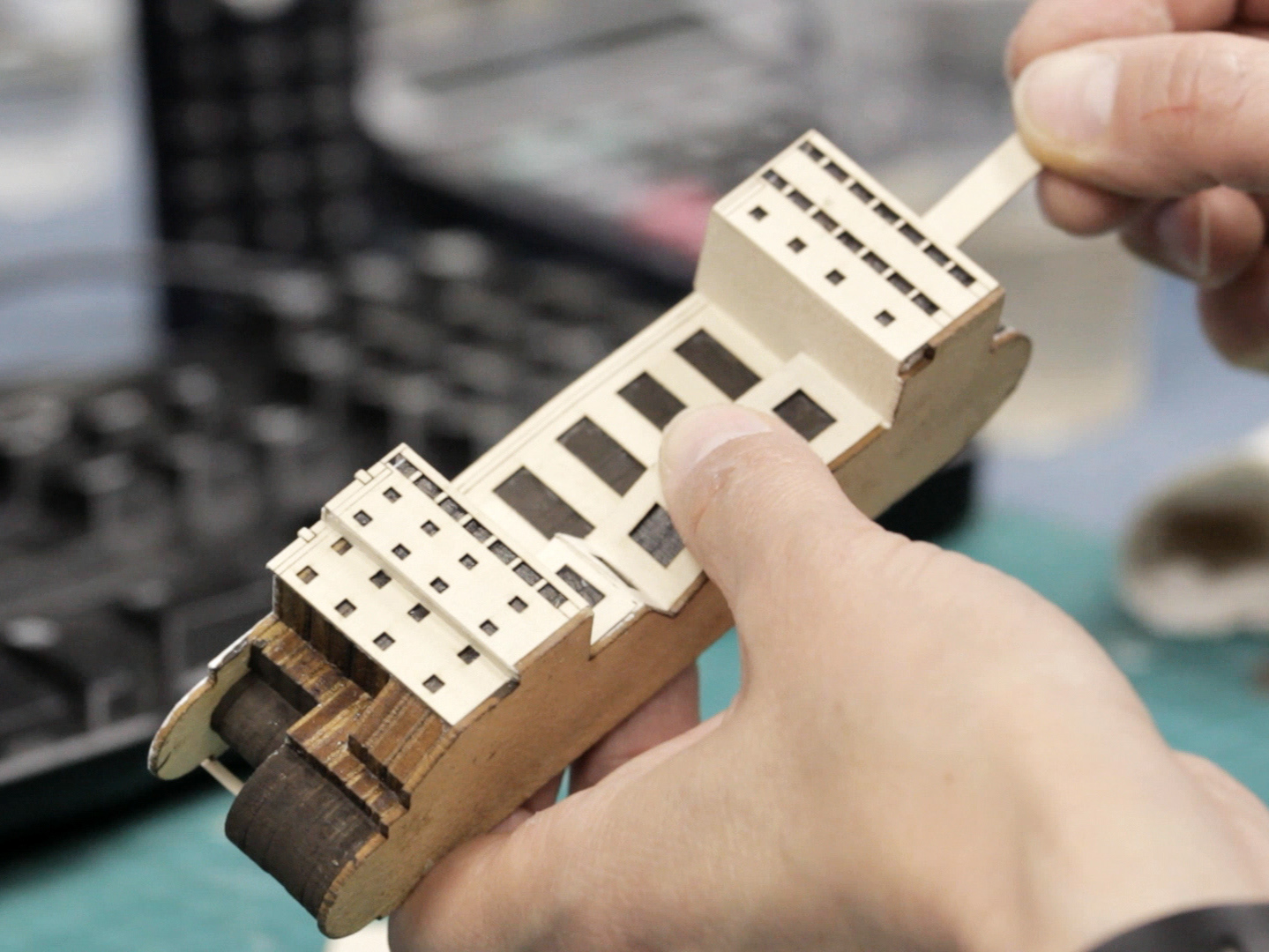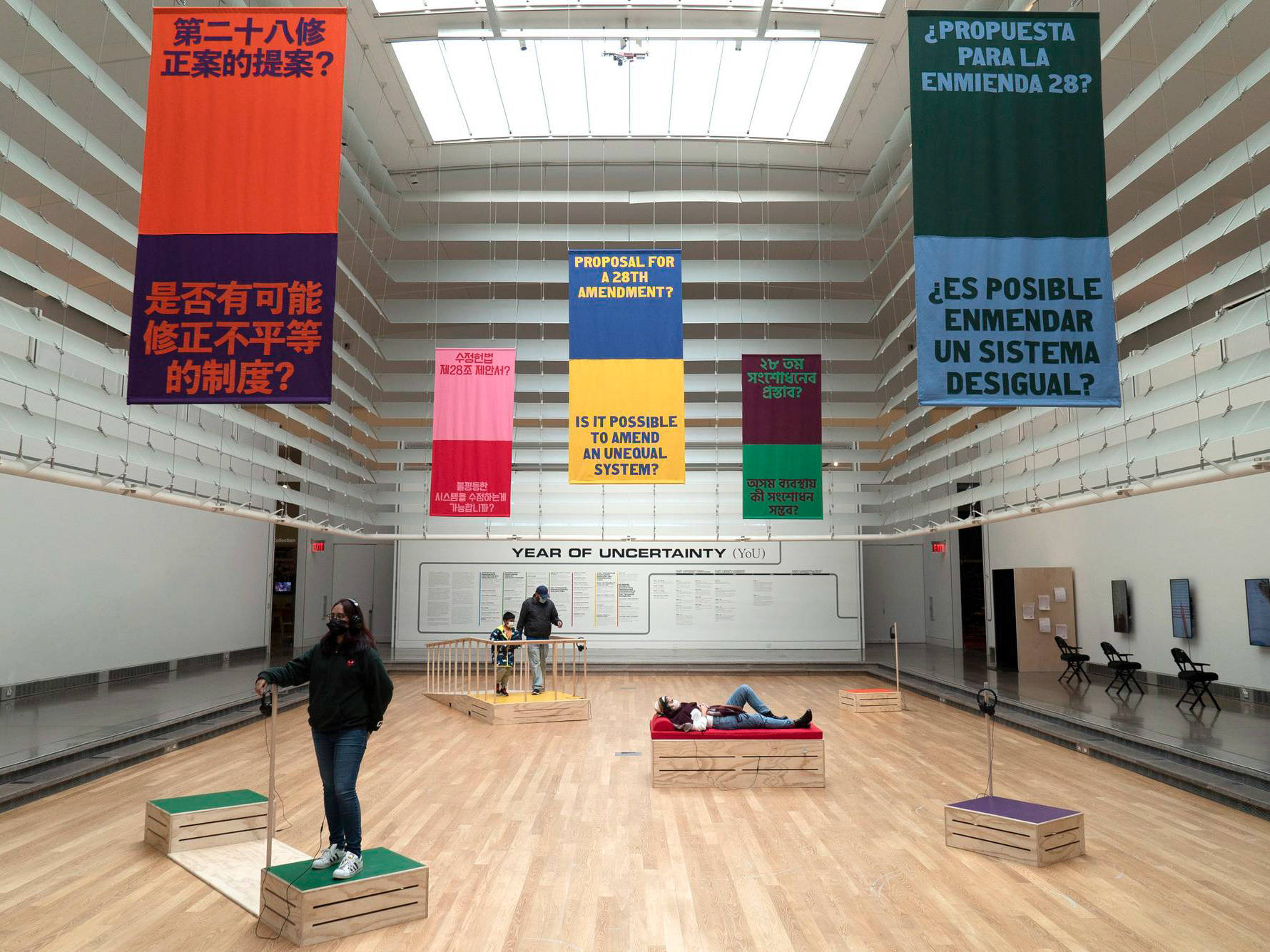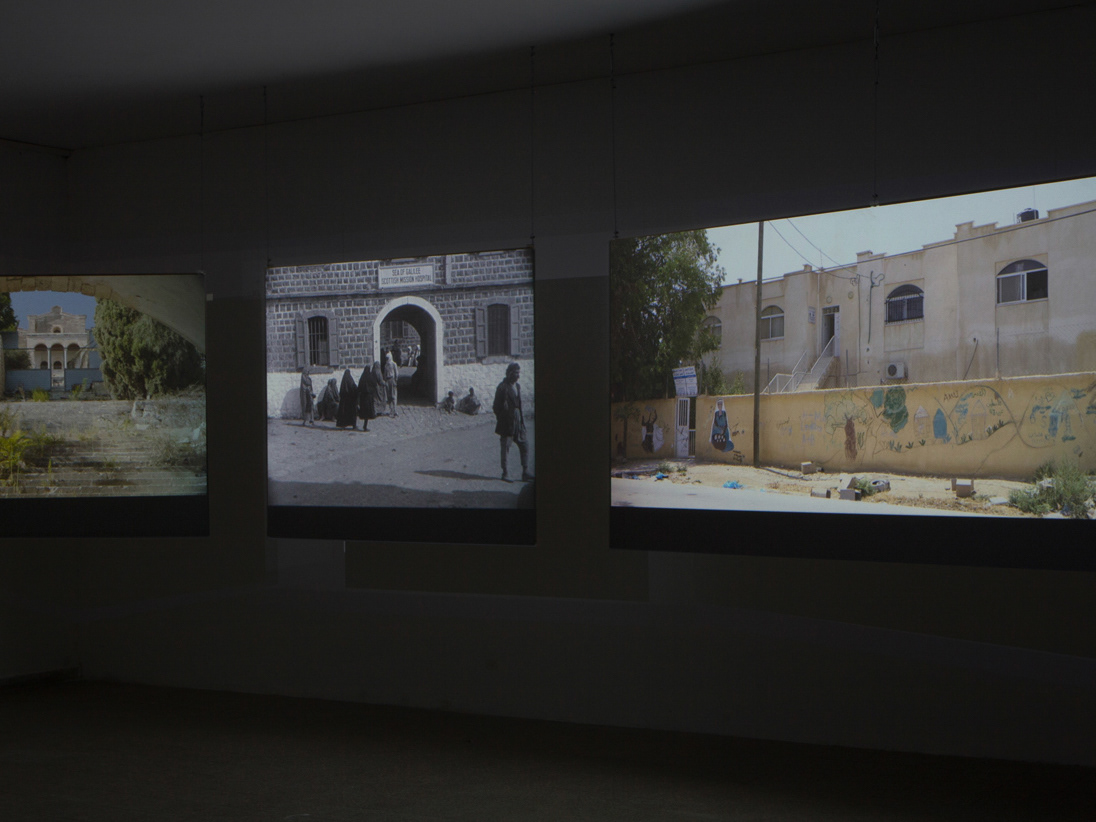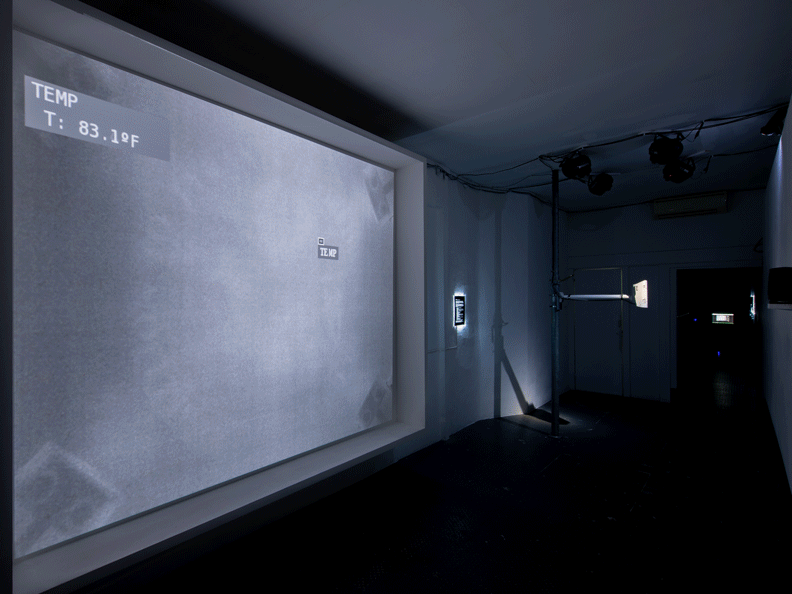The Great Seal, 2016-2018
The Great Seal is an immersive installation that invites viewers to reflect on the role of religious belief, national identity, and political performance in shaping public narratives. Set within a theatrical re-creation of a political summit, participants are invited to read actual speeches delivered by American and Israeli leaders at events hosted by Christians United for Israel (CUFI), one of the largest evangelical organizations in the U.S.
The installation includes a custom-designed rug featuring an early version of the Great Seal of the United States, originally proposed by Benjamin Franklin and Thomas Jefferson. Through this symbolic reference, the work opens a dialogue about how historical myths and political symbolism inform contemporary geopolitical alliances.
By merging elements of performance, archival material, and interactive media, The Great Seal explores how public address can be both persuasive and performative, prompting questions about collective memory, political identity, and the role of the individual within larger ideological structures.
This work is the first in a trilogy examining the evolving cultural meaning of "Judeo-Christian" identity in modern political discourse
Activation Event of The Great Seal at EYEBEAM, NYC, June 2018
